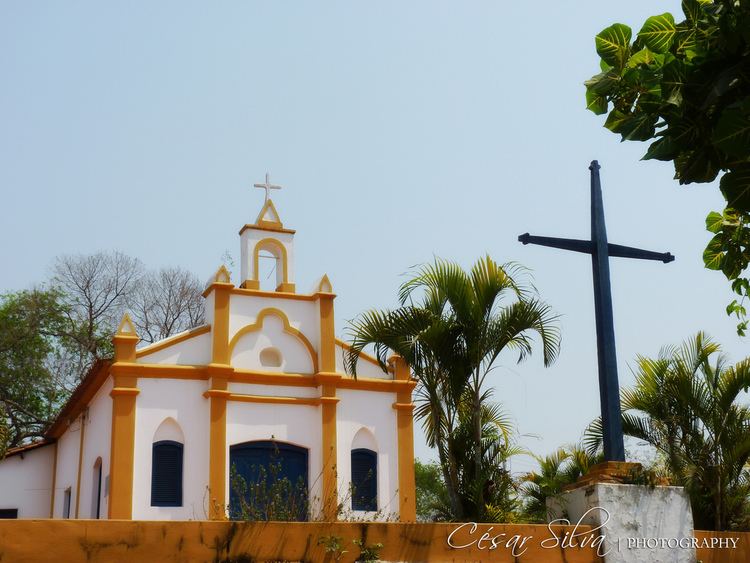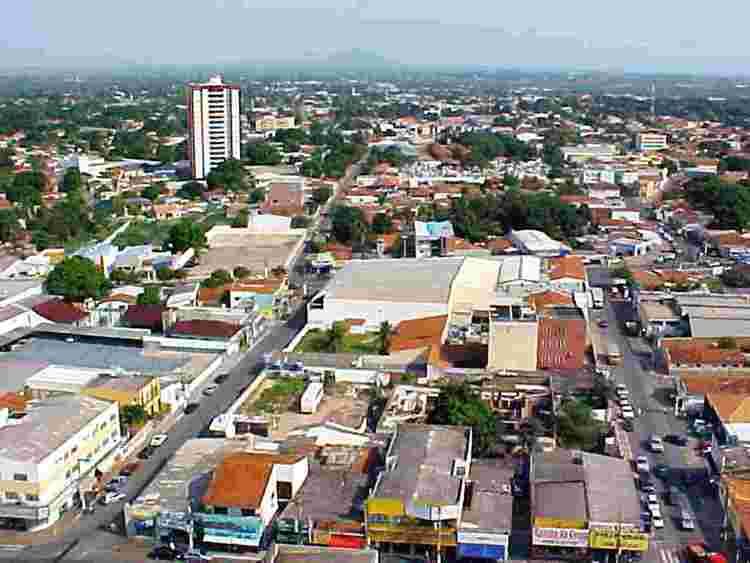Country Brazil State Mato Grosso | Area 938.057 km2 Region Center-West | |
 | ||
Mayor Walace dos Santos Guimaraes (PMDB) | ||
Várzea Grande (Mato Grosso) is a municipality in the state of Mato Grosso in the Central-West Region of Brazil.
Contents
- Map of Vrzea Grande Mato Grosso
- History
- Geography
- Economy
- Climate
- Demographics
- Transportation
- Infrastructure
- References
Map of Várzea-Grande,-Mato-Grosso
History

The "City of the Great Lowlands" arose from a donation of land grants given to the Guana Indians, considered civilized by the Portuguese and known for their skills as boatmen and fishermen, in 1832 by the imperial government. The city, whose name roughly translates into English as "Great Lowlands of the Guana", was a mandatory stop along the way for the herds of cattle that came from Upper Rio Rosario (now Rosario West ) that were en route to Cuiabá.

However, according to traditional history, its foundation is closely linked to the military camp built during the war with Paraguay, supposedly near the current center of town - Camp Couto Magalhães. However, this military camp, which gave support to the state capital during the war, which was established May 15, 1867, by general, lawyer, and diamond mining town founder, José Vieira Couto de Magalhães, was located on the left shore of the Cuiabá River, or on the other side of the river from the city of Cuiabá, near the mouth of the Rio Coxipó, the northern capital.
Geography

Grande floodplain bordering the municipalities of Cuiabá, Santo Antônio de Leverger, Our Lady of Deliverance, Acorizal and Raft . The territory was part of the city of Cuiabá, before being dismembered. Between the two cities is only the Cuiabá River as the boundary. The savanna dominates the region with the densest forest on riversides and wetlands are already seeing a trend of transition to the Pantanal . Varzea Grande is located more than 180m sea level, this causes the city to be more higher than the Equals.
Economy
Grande floodplain is predominantly commercial and industrial, and subsistence agriculture. Through tax incentives and land grants, industries settled in the region, constituting, together with the capital, the main industrial center of the state. Varzea Grande was named in 2010 to industrial and commercial city in the state of Mato Grosso surpassing even the famous Rondonópolis and ranking 26th place in question their nation Terminal Integration André Maggi moves more than 60,000 people per dia.Previsto For 2012 the launch of the first Shopping Center in Lowland Great Guano Shopping Center located near the Marechal Rondon International Airport, which should make the city's economy grow and move further trade city, and located in the Shopping Formula Avenue FEB.
Climate
Lowland Grande and Cuiabá have a tropical hot and humid climate. The temperature range varies from 17 °C to 32 °C in winter, in recent times has been very strict temperature lowered to 10 °C in July with windchill 4.9 °C because atypical for residents who are accustomed to high temperatures, but it is very dry this time of year in Mato Grosso, there are many fires that are harmful to health and this causes the relative humidity to drop to 13%. The summer is very hot with temperatures ranging from 23 C to 40 °C; it is also the season with more rain with changes from one moment to another, and this causes the temperature to drop a little, on a rainy day the temperature is no more than 22 °C. Lowland Grande and Cuiabá have hot nights with temperatures that can reach 32 °C, and drop to around 24 °C.
Demographics
According to data from demographic census carried out by IBGE in 2010, the population of Greater Lowland is concentrated almost entirely in the urban area. Nothing more than 248,829 people - 98.46% of the total population - live in urban areas, with only 3880 inhabitants (1.54%) in rural areas. [6]
Most of the population of 252,709 inhabitants are women, 127,351 are women (50.39%) against 125,358 men (49.61%). [6]
As its population recorded in 2000 was 215,298 inhabitants, Greater Lowland grew 17.37% in ten years - or 1.73% per year - with an absolute growth of 37,411 people in that period.
Transportation
Public transportation is done by buses, collective taxis and motorcycle taxi, integrated with Cuiabá.
According to the Traffic Department of the MT, the fleet of Cuiabá and Várzea Grande consists of a total of 292,219 vehicles (215,174 and 77,045 respectively), while 152,366 are cars (117,310 and 35,056 respectively) are 77,024 motorcycles / scooters (51,699 and 25,325 respectively ) (RENAEST est. 2008).
Marechal Rondon International Airport, which also serves Cuiabá is located at Várzea Grande.
Infrastructure
Education
